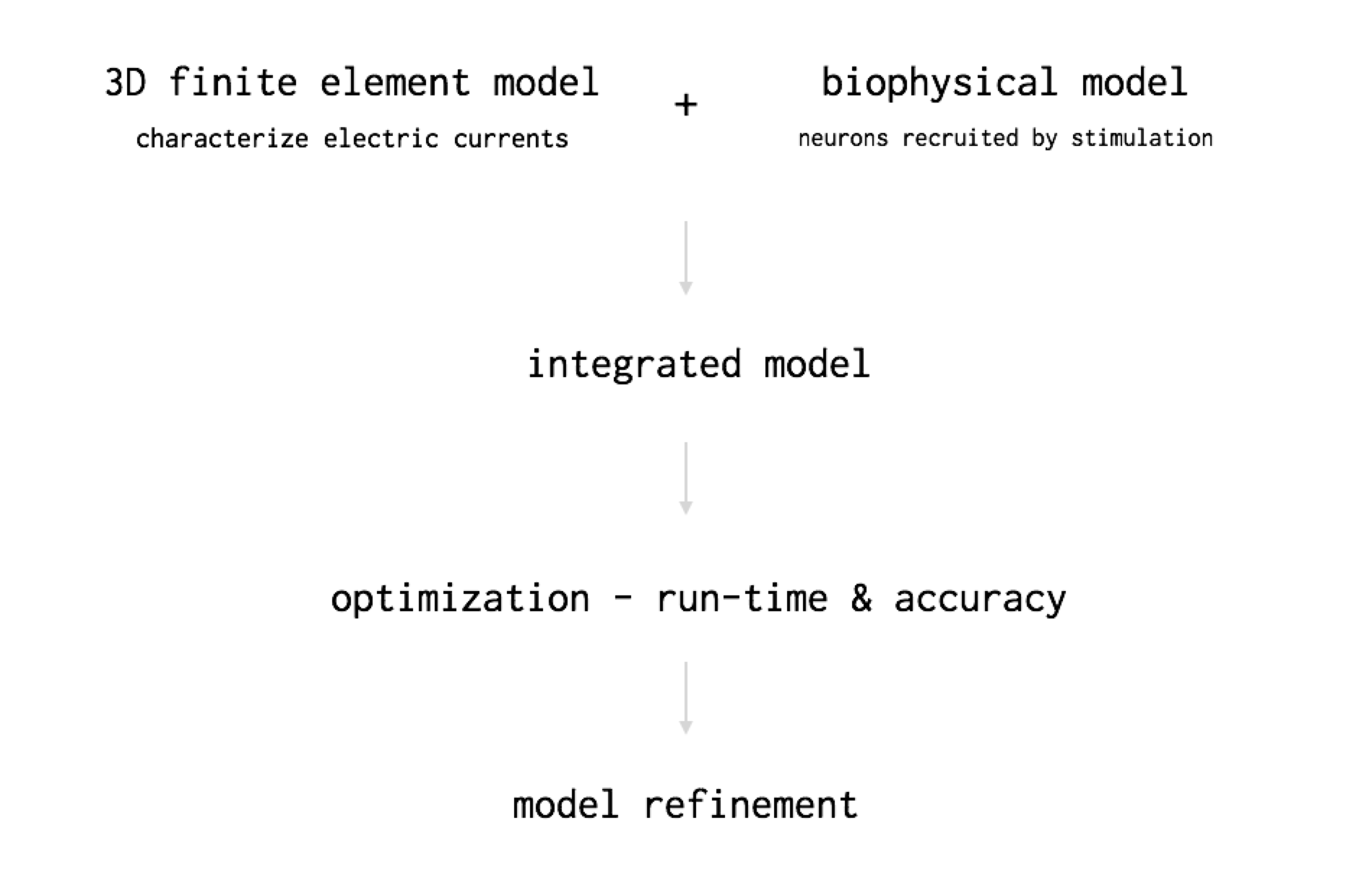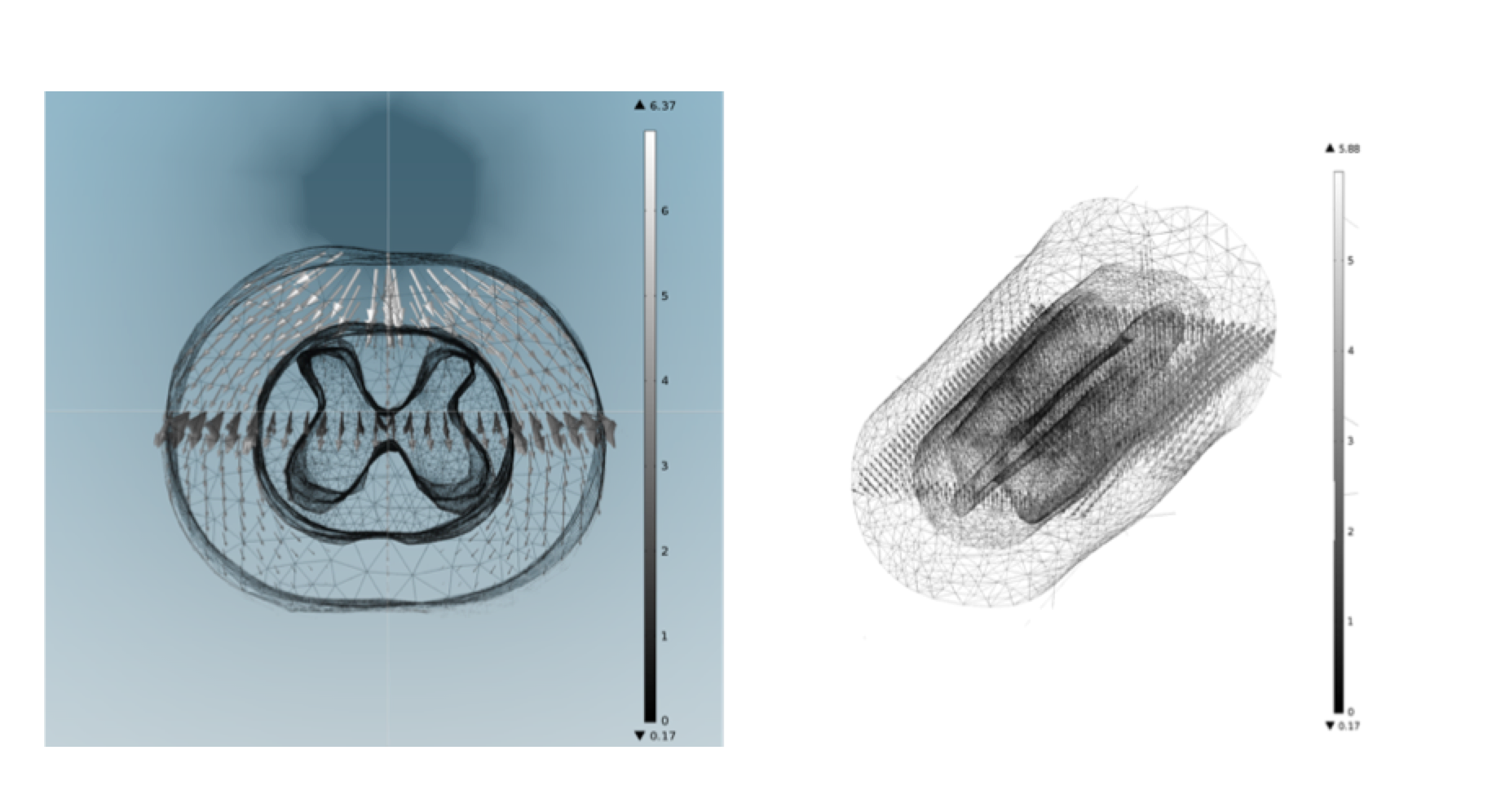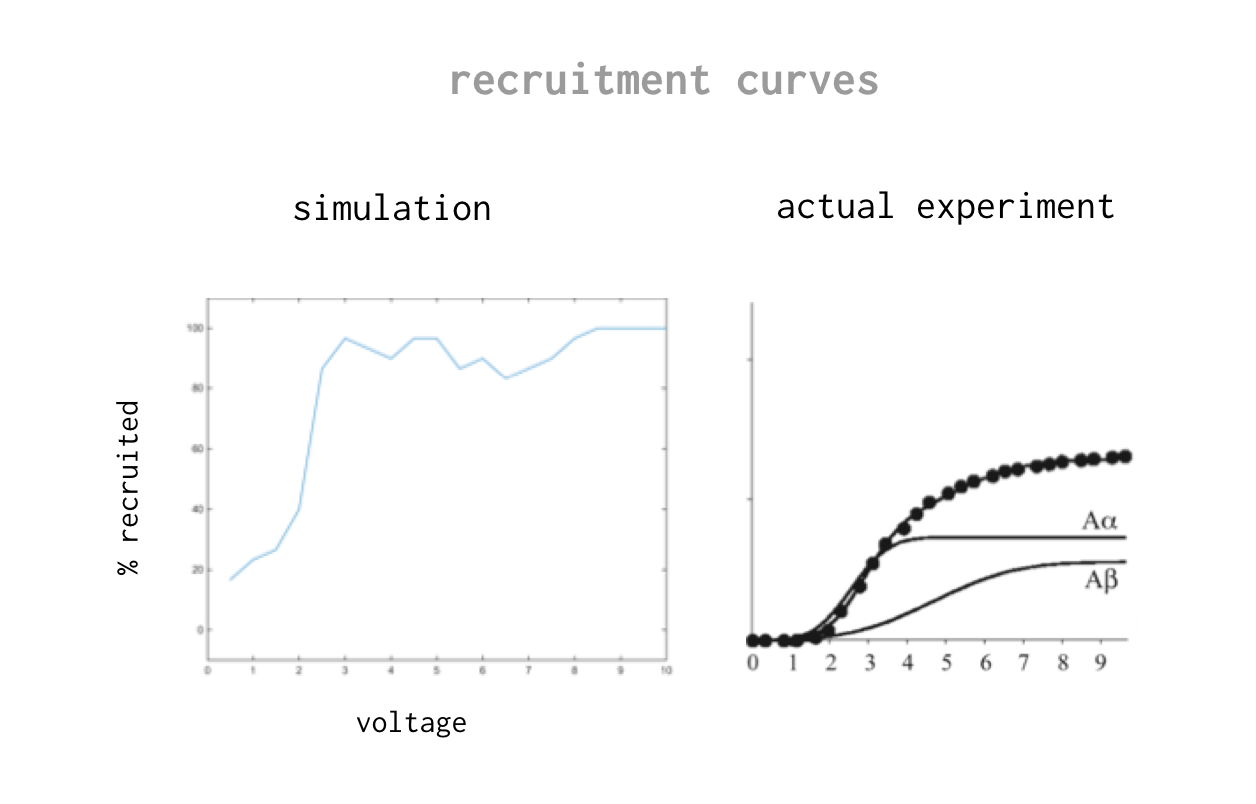Neuroengineering Thesis
2015 • Computational Model • David Borton Lab, Brown University
For my undergraduate thesis in biomedical engineering, I worked under the supervision of Dr. David Borton, and guidance of Radu Darier (phD) to create a computational model for Epidural Electric Stimulation (EES) in primates. This thesis paved the groundwork for my development as a technologist. Stepping out of my engineering education, I was able to work across disciplines, and merge software tools to create a computational model.
In EES experiments, electrical currents are propagated through a test subject's (usually a primate) spinal cord with the aim of understanding which stimulation parameters are therapeutic. Research to date has largely been driven by a trial-and-error process, which can be inefficient, and inhumane to test animals.
With the aim of reducing reliance on live experimentation, I worked on a computational model for Epidural Electric Simulation. I integrated a physical model of the spinal cord that I created with an electrical model to stimulate an experiment.



